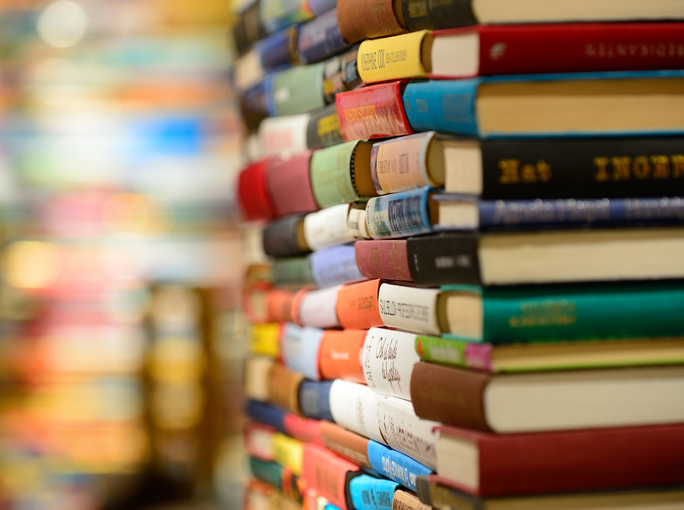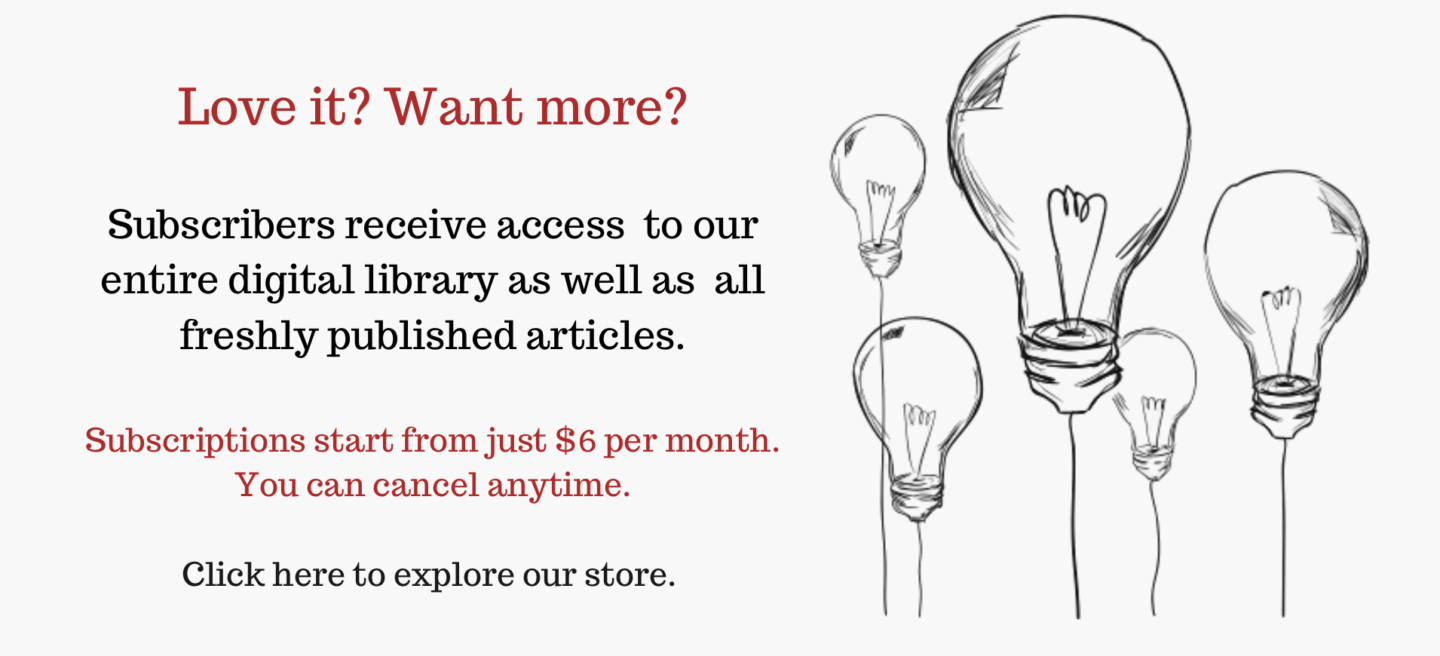Featured in

THE LINE IS dense and splits the store in two. Christmas week, book retail, 2021. Before me is a customer who won’t hand over Liane Moriarty’s new book, Apples Never Fall, for me to scan, seemingly until I either acquiesce to a discount on the price or, at the very least, acknowledge their position on the matter. I know what they’ll say: I saw this at Kmart for half the price.
They say it. If I had a dollar.
It’s quite the conundrum, choosing whether to gently advise them of how much goes into each sale here: extra staff (we’re not just at the register); the free postage we’re currently offering within the area; the fact that displays cost money and so does the aircon. There’s also the threat of alienating a customer – even though they haven’t been right for years, they often appear so when framing the encounter to their friends.
Besides, they know why they’ve chosen to be here. They clutch their loyalty card while I ring up the list of titles I helped them choose as we strolled the aisles together – Michael Mohammed Ahmad’s The Lebs for the nephew who’s just finished Lord of the Flies; Diana Reid’s Love & Virtue for the niece who’s devouring campus novels; Max Easton’s The Magpie Wing for a ‘footy dad who wants to read more’.
Their eyes rest on the pile as they hand over the Moriarty. I don’t mention Kmart.
‘Would you like a paper bag for an extra thirty cents?’ I ask.
AT THE RISK of sounding predictable, bookselling in Australia is at an uncomfortable juncture. The post-pandemic landscape has ushered in a glut of changes to reading and purchasing habits, some desirable, some less so.
The good: even as books become more expensive – the trade paperback RRP has now crept to the $34.99 mark – the 2021 National Reading Survey noted only 8 per cent of respondents thought a book poor value for money. Australian book sales grew 7.2 per cent in 2022, to 70.9 million units. These were driven by a 34 per cent increase in graphic novels, a nearly 8 per cent increase in children’s titles, and a whopping 19.4 per cent increase in adult fiction –Australians bought fifteen million of those adult fiction titles. The BookTok boom has prompted a proliferation of adult fiction stardoms and, more importantly, secured a community around these figures for a younger cohort of like-minded readers. One day a reader, the next day a leader, as the proverb goes. Around 130,000 different titles were purchased across Australia each week through 2022, on average. The book-world tenets of community, accessibility and sales appear to have aligned.
The bad: bestsellerdom doesn’t always reward the local industry that sustains it. While the efforts of Terry Denton and Andy Griffiths, Anh Do and Bluey consistently account for sales in the children’s category, Jane Harper’s crime novel Exiles was the lone Australian fiction title in the top ten books sold last year. Colleen Hoover had four titles, with fellow US authors Taylor Jenkins Reid and Delia Owens also scoring one each. Harper was joined by Australian non-fiction authors Scott Pape (Barefoot Kids) and Nagi Maehashi (RecipeTin Eats: Dinner).
While BookTok fervour can largely account for the dominance of Hoover, Reid, and Owens when it comes to fiction, Australian non-fiction purchasing habits remain influenced by the recognisable and culturally vetted. Though half of the top fifty titles sold during 2022’s Christmas sales week were Australian, it was popular personalities such as Ash Barty, Niki Savva and Peter FitzSimons that stormed the bestseller list alongside Maehashi and Pape. It’s worth noting that Maehashi’s remarkable debut sales figures – RecipeTin Eats sold 132,440 copies in three months and secured the coveted spot of Christmas week bestseller – are largely a product of the cook’s immense social media presence; similarly, Pape’s earlier book, The Barefoot Investor, enjoyed its own cultural moment and consumer hysteria. Book buyers favour the familiar. When coupled with the lack of Australian representation over the year in a notable growth area like adult fiction, this suggests support for homegrown books is top heavy.
Simultaneously, competitive sales tactics by retail giants like Big W and Kmart are lining the pockets of publishing houses while saturating the bookselling industry through loss-leader strategies. Sheer bulk of purchases across the nation allows these conglomerates to drop prices of top-tier titles while still breaking even. When Hoover’s much anticipated romance novel It Starts with Us hit shelves in late 2022, Kmart sold the title for $16, while Dymocks offered a special release price of $22.99 (returning thereafter to $32.99). Dymocks, boasting the most franchises in the country of any retail bookstore chain, is likely the best-placed option to match cheaper prices through purchasing power, yet remains ludicrously more expensive by comparison. At the time of writing, Dymocks retails their current Book of the Year, Bonnie Garmus’s Lessons in Chemistry, for $22.99, while it’s available at Big W and Kmart for $12, representing a 47 per cent disparity in price. Likewise, in non-fiction sales, which make up 44 per cent of book sales across the country annually, Prince Harry’s record-breaking Spare sells for 41 per cent off RRP at $35; Dymocks offers no discount, retailing the memoir for $59.99.
THE ARGUMENT THAT independent and small book grocers have a more impressive and widespread range has held for a long time, but in May, Big W was awarded the prestigious Book Retailer of the Year at the Australian Book Industry Awards (ABIAs), beating out Dymocks, Harry Hartog and QBD Books. The other nominee in this category was Target. Recognition on this level legitimises the sales of books for half their value and reinforces the complaints levelled daily at small retailers, intimating that the greed of small-business owners makes them overplay their hand in pricing.
This is exacerbated by the marketing activity of conglomerates like Wesfarmers (Kmart, Target) and Woolworths Group (Big W). Perhaps once known for only carrying Mills & Boon titles and Harry Potter, Big W is now associated with the Better Reading Top 100 Books, as voted by the Better Reading community, a near identical list to the Dymocks Top 101. Hardly a pioneer for Australian literature, Big W uses the subtle assurance of a Top 100 list to suggest to consumers – particularly those who may only shop for books once or twice a year – they will find what they need with them, or else risk time and effort on a title they will regret. Big retailer sales do little to invigorate the basal rings of writers, editors, publishers and booksellers on whom the industry relies. And, with consumer appetite in this Top 100 space guaranteed, so too is the focus of conglomerate publishing houses.
Ergo, the death spiral.
While Big W and Kmart reduce the value of print, consumer expectations are being channelled through a cost-of-living crisis. Financial risk on unknown writers and the more obscure (that is, creative) works goes against the ethos of ‘data-driven decision-making’ when publishing titles, as Dan Hogan was quoted saying recently in Kill Your Darlings.
EVEN SO, FROM the 130,000 unique titles purchased across Australia each week, it’s clear that Australian reading habits are broader than conglomerate macro culture insists. If a national literature reflects the nation’s identity, then beneath the homogenous bulk of Top 100s lies an appetite for diversity.
Anecdotally – wrote publisher Terri-ann White for Sydney Review of Books in 2017 – ‘most book purchases come from word-of-mouth recommendations’. The stats back this up: the National Reading Survey identified that 43 per cent of readers follow recommendations made by friends and family, and that word-of-mouth remains the greatest influence on sales.
Let’s make the most of it. Buy local. Find something new from the stacks. Tell your friends.

Share article
About the author

Joshua Klarica
Joshua Klarica is a writer who lives and works on Gadigal and Wangal land, writing poetry and essays. His work can be found online at Overland, Mascara...